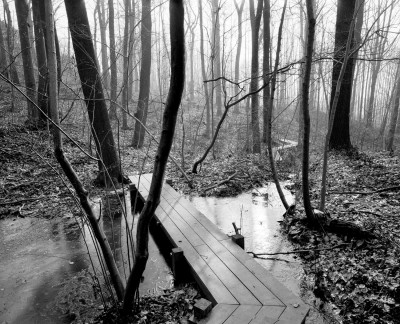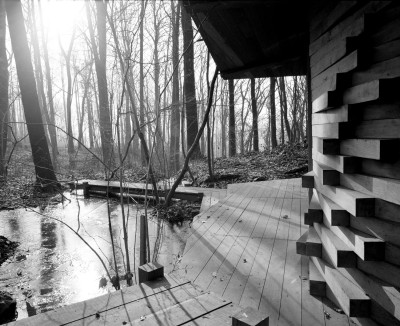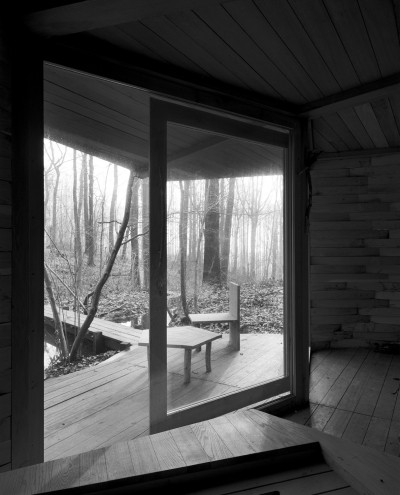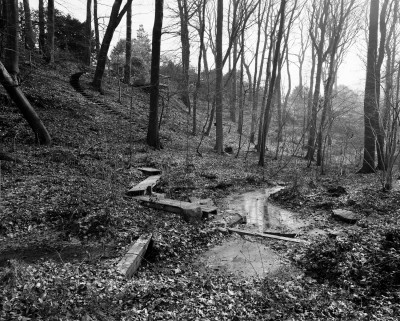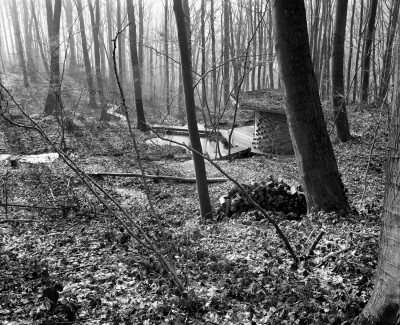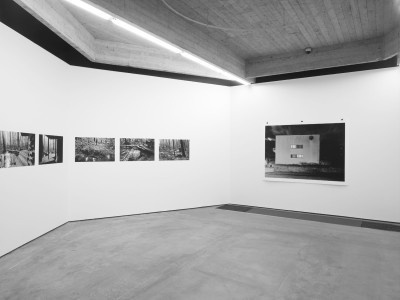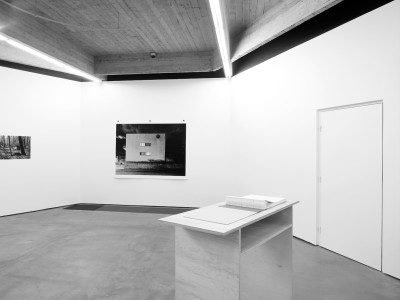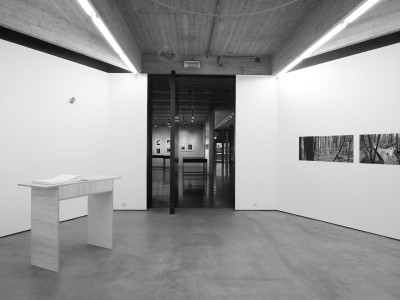2009
LA CABANE
A Cahier of 7 + 1 photographs of a woodland cabin in the South of Flanders as part of ‘Flash B(l)ack’ CC Strombeek in 2009, a group exhibition curated by Luk Lambrecht
2002 — 2009
'La Cabane' was part of the project 'Flash B(l)ack: an exhibition about the memory of photography' curated by Luk Lambrecht. This exhibition aims to develop an idea about the significantly changed position of photography through the work of a dozen (inter)national artists. The transition from analogue to digital photography has not only led to an even greater democratization of the medium, but also to a sense of satisfaction, whether instant or not, about the results of all that clicking.
'Flash B(l)ack' highlights a number of approaches within the artistic discourse. The exhibition is built around the work of two pioneers from the analog era with black and white photography: Paul Nougé and Julien Coulommier.
In the winter 2002 I visited the woodland cabin for the first time and was overwhelmed by the nature and the environment. I decided to photograph this project with my analogue camera and returned many times and documented my visits over and over again until spring of the next year.
Only 7 + 1 photographs were selected to make this edition. The edition is printed on matte archival paper on 25 copies. Book binding by Clara Gevaert. The special edition comes with a massive oak box.
Price edition 150 €
Price special edition in massive oak on demand.
Woodland Cabin in the South of Flanders
Architecture by Robbrecht en Daem architecten.
Landscape by Herman Seghers.
The cabin is built in a hilly and wooded area in the south of Flanders. The small building is at the heart of a system of paths, steps and fences constructed in the surroundings. These constructions are not intended to do any more than leave some sort of trace in a wild environment which in essence remains unchanged. The project seeks a certain contact with the chaos of nature and preserves this unshaped state.
The cabin serves as a rudimentary lodging where one can enjoy silence, birds, animals and plants. It’s a small building and contains only a bed and a limited seating area with two chairs and a wood stove. All other household activities such as washing and cooking take place out in the open air. The structure stands on a platform built above a stream. The walls form a bilobate floor plan. They are made of stacked wooden blocks joined with dowel pegs. The roof comprises a web shaped pattern of beams boards covered with peat.
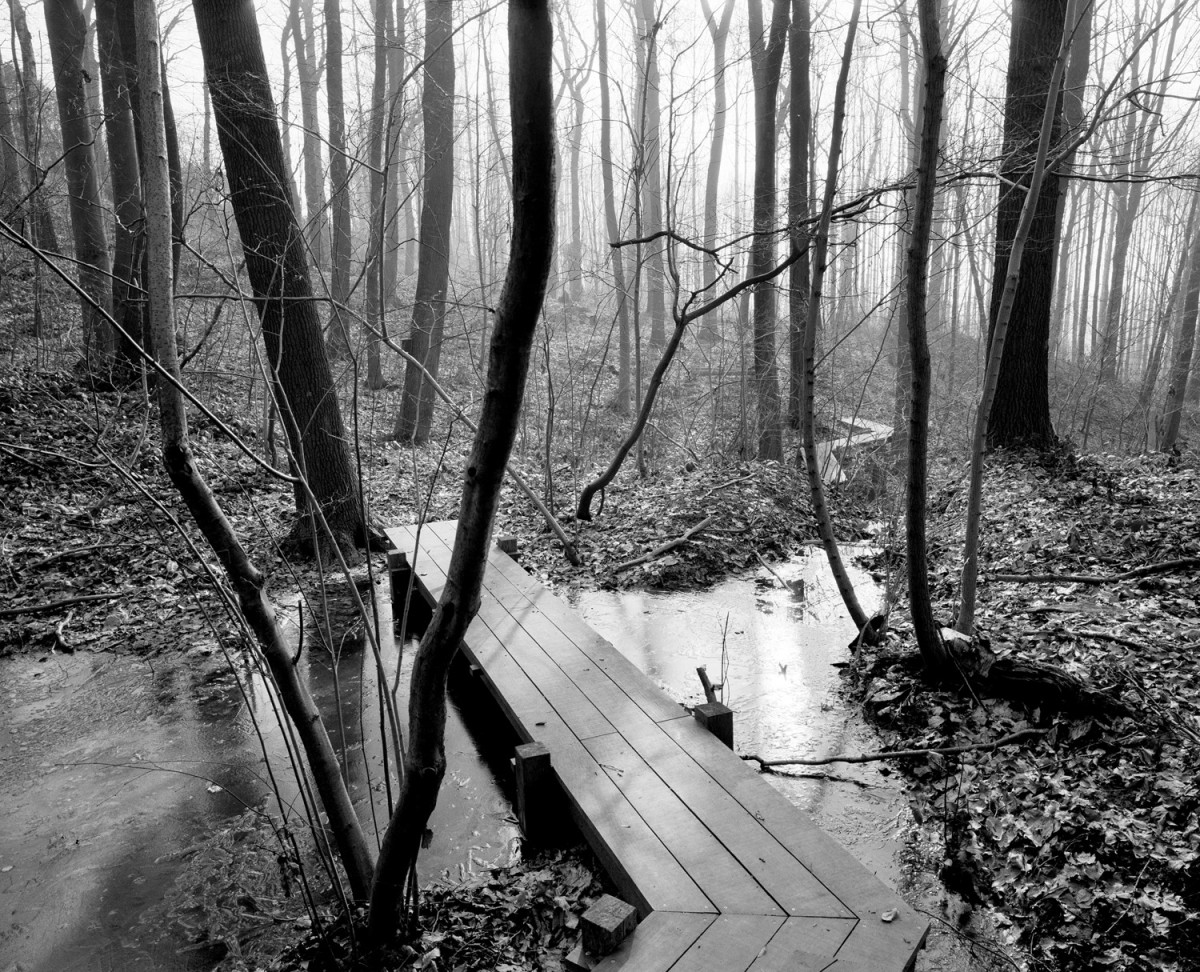
La Cabane, 2002-2009
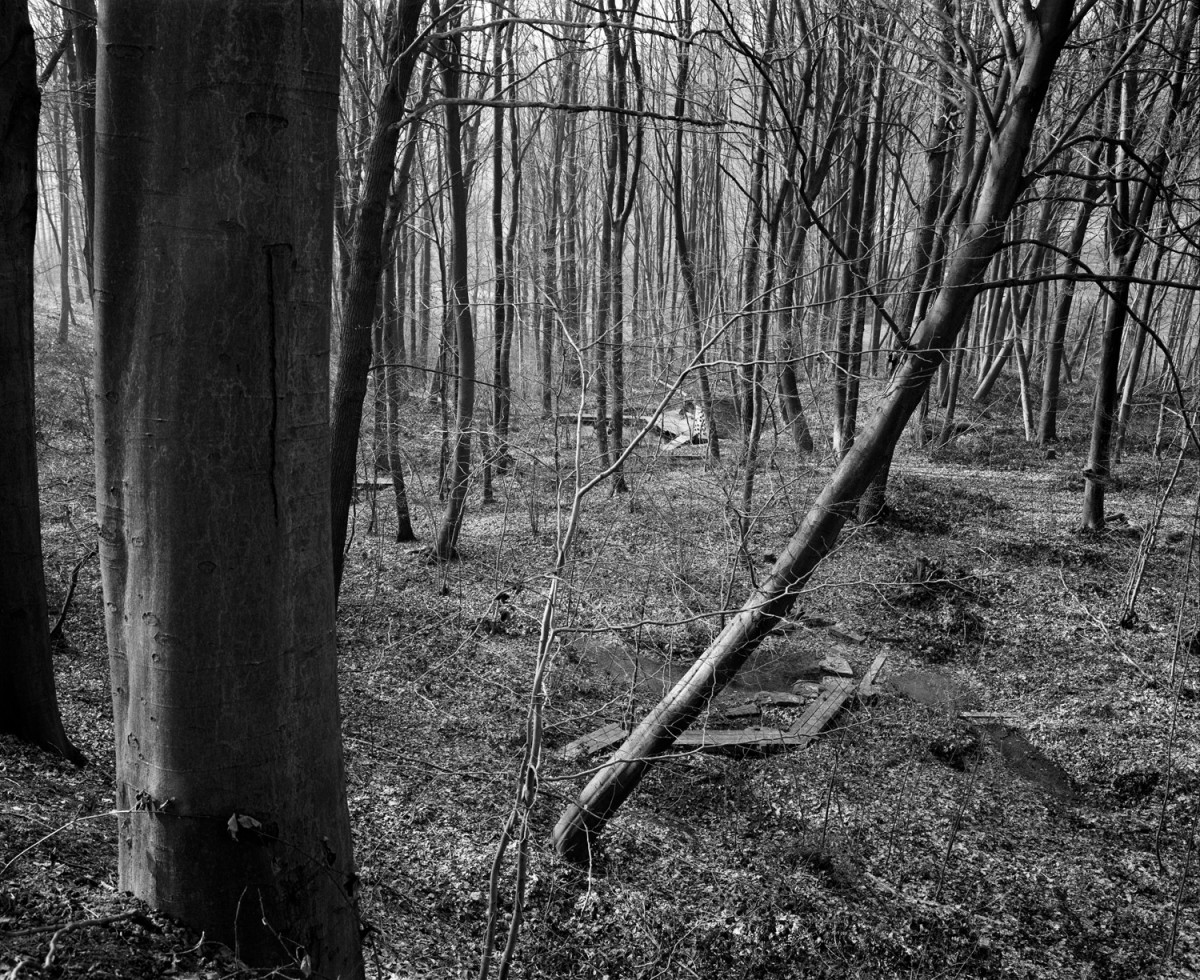
La Cabane, 2002-2009

La Cabane, 2002-2009

La Cabane, 2002-2009
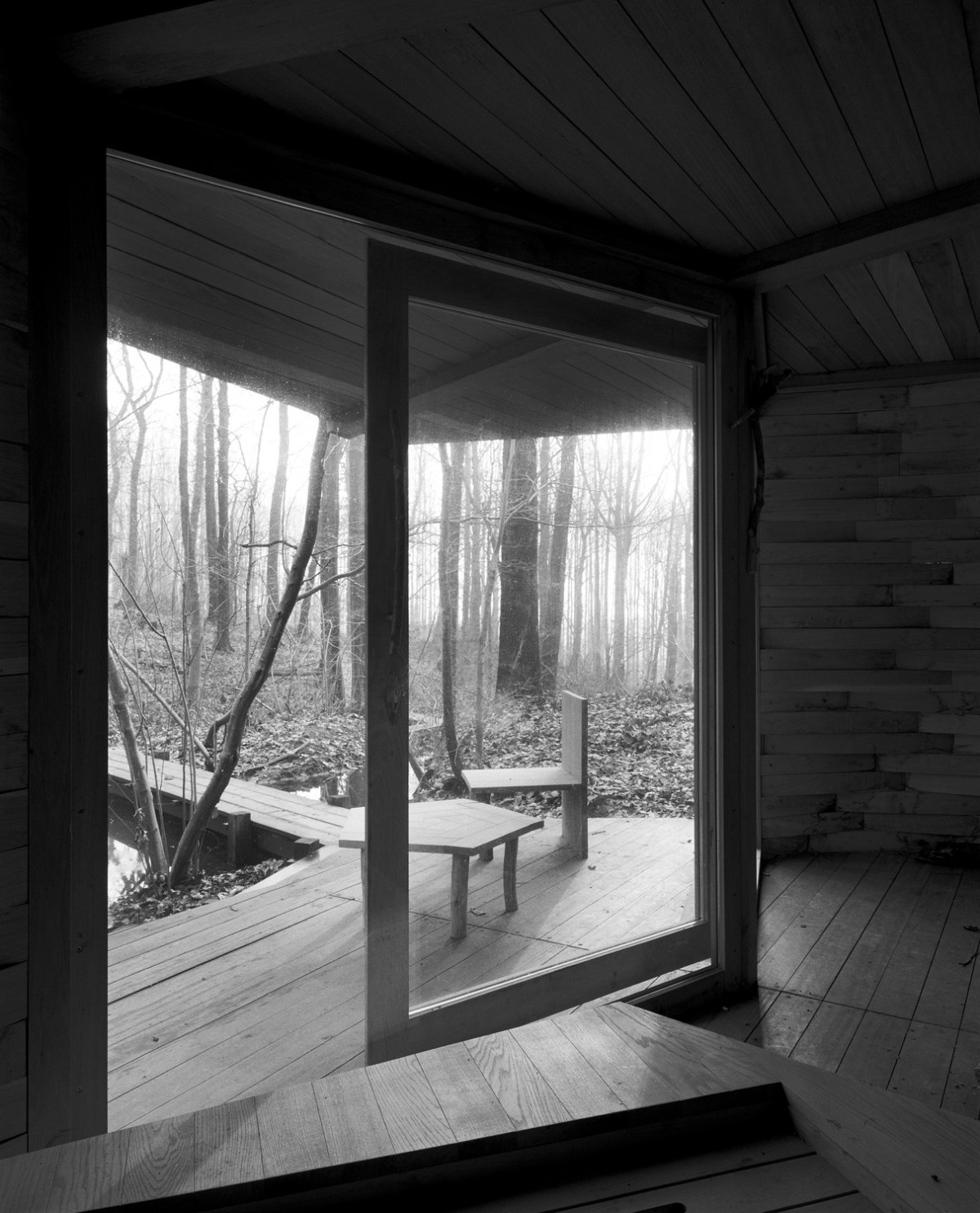
La Cabane, 2002-2009

La Cabane, 2002-2009
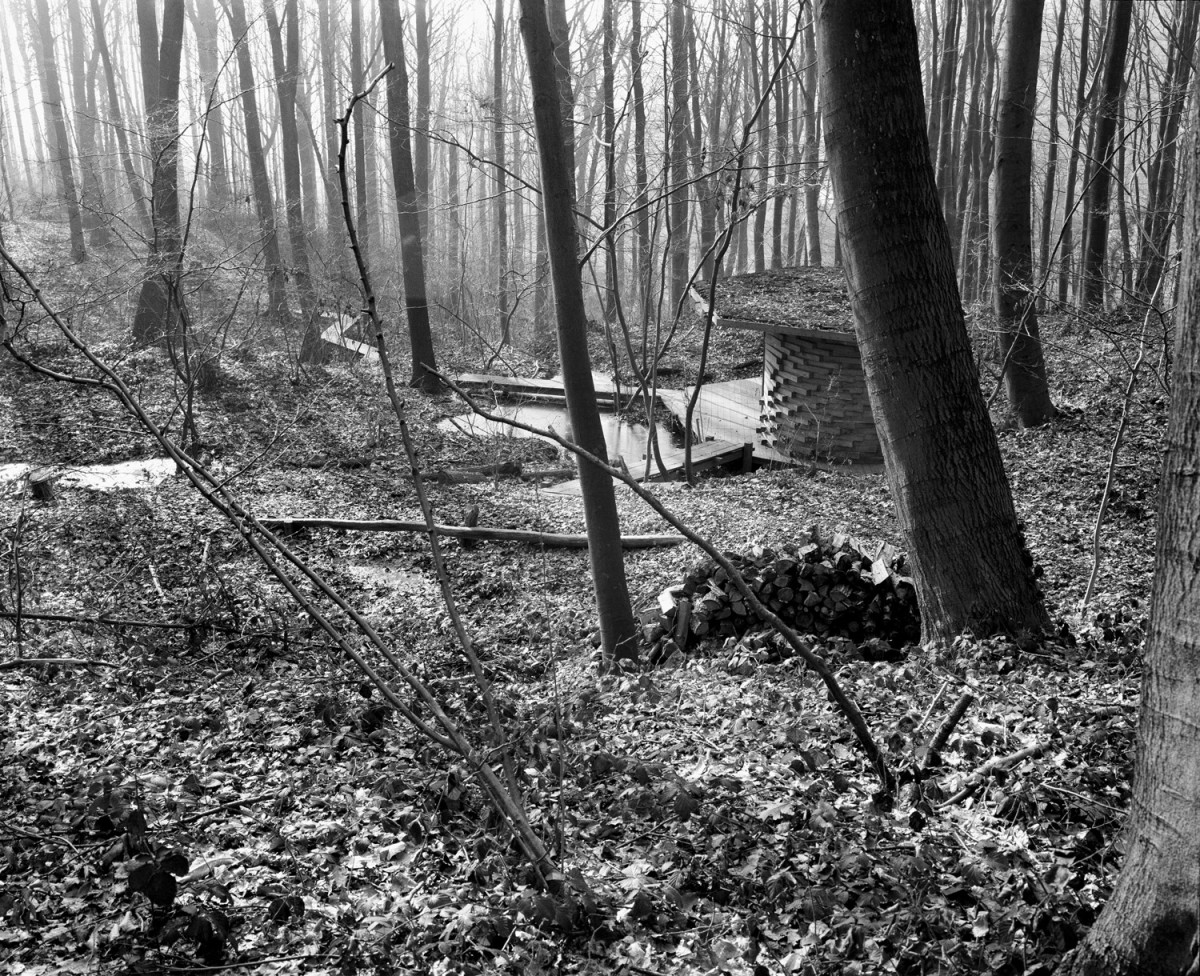
La Cabane, 2002-2009
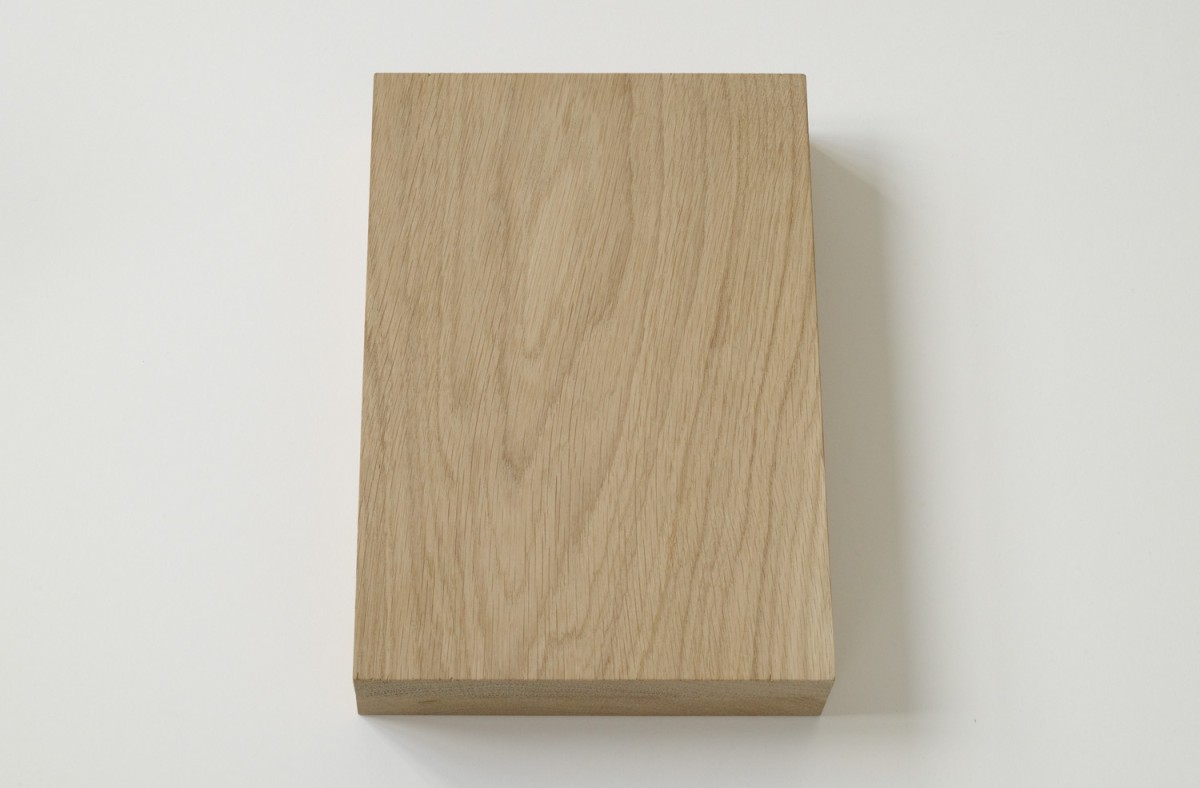
La Cabane, 2002-2009
Special edition in a wooden box
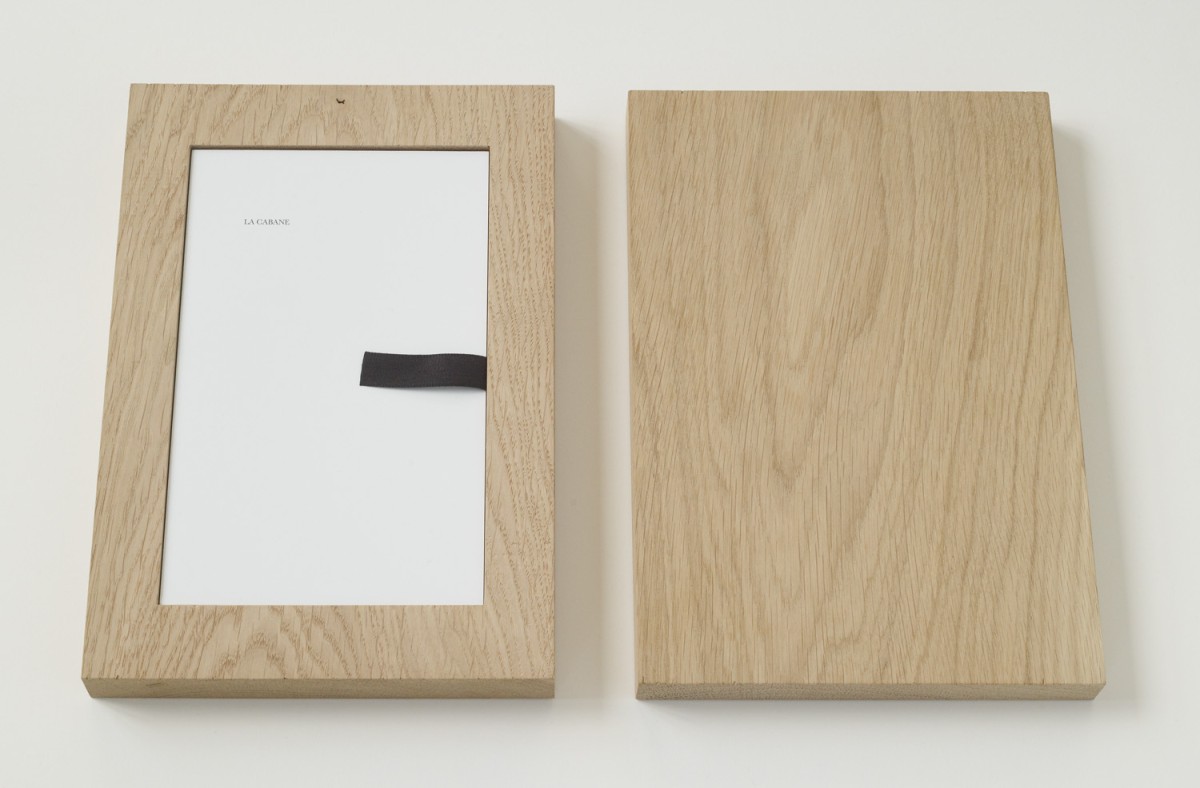
La Cabane, 2002-2009
Special edition in a wooden box
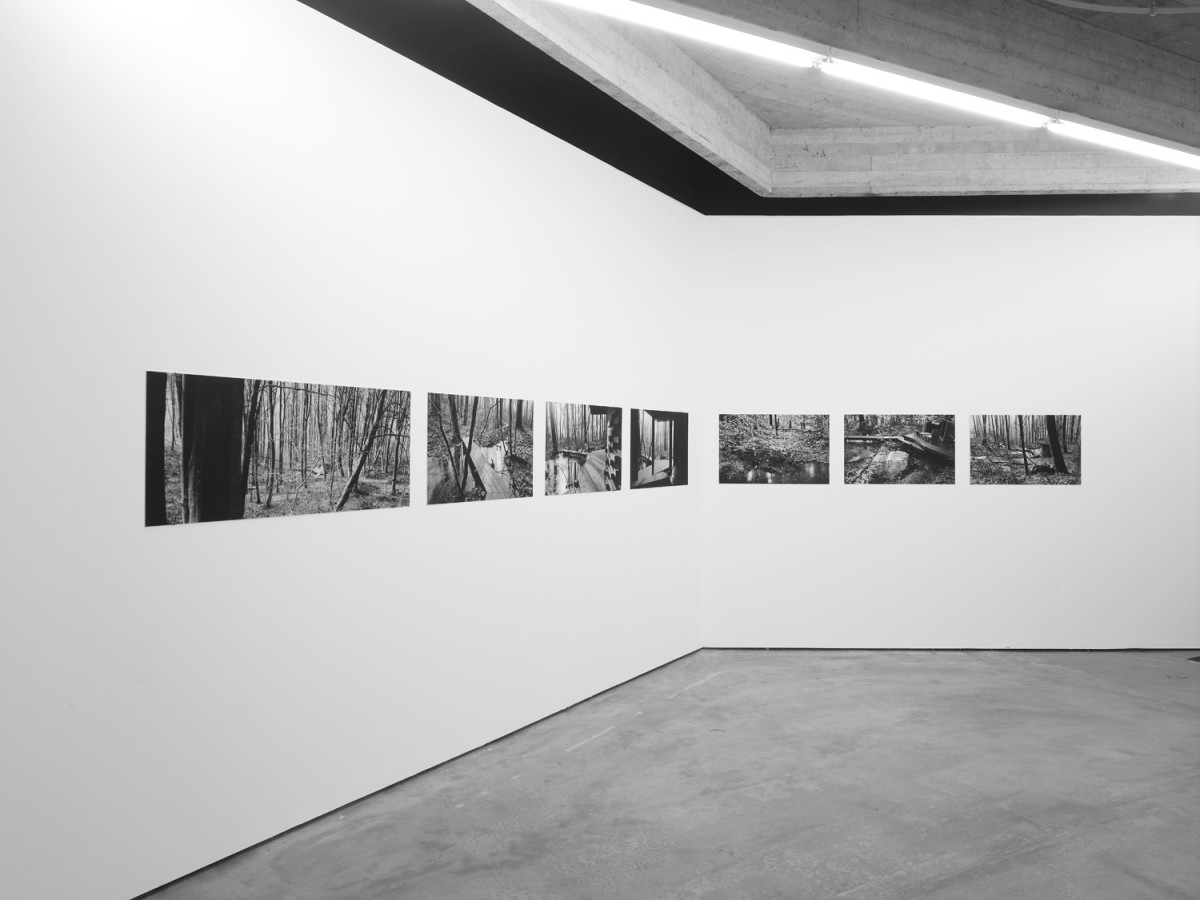
Exhibition View ‘Flash B(l)ack’ at CC Strombeek 2009
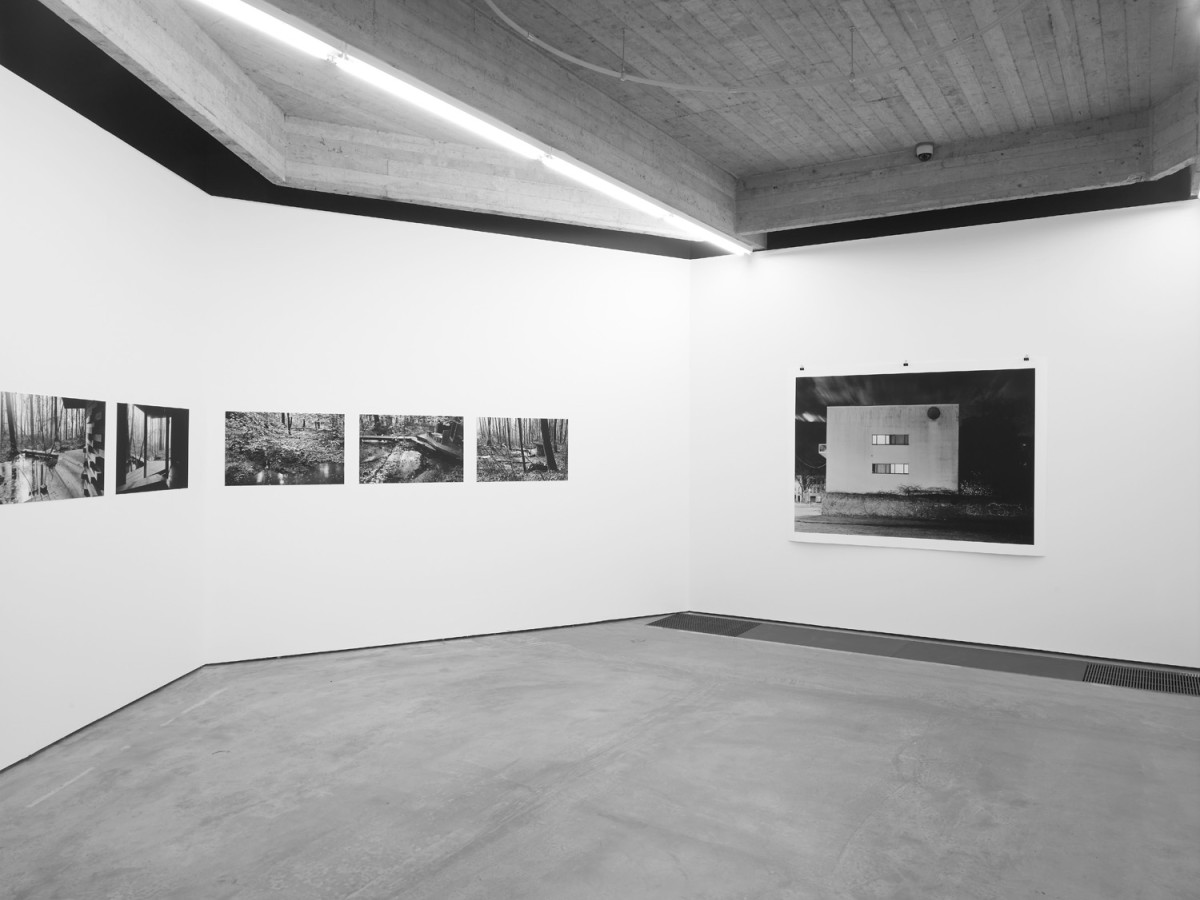
Exhibition View ‘Flash B(l)ack’ at CC Strombeek 2009

Exhibition View ‘Flash B(l)ack’ CC at CC Strombeek 2009
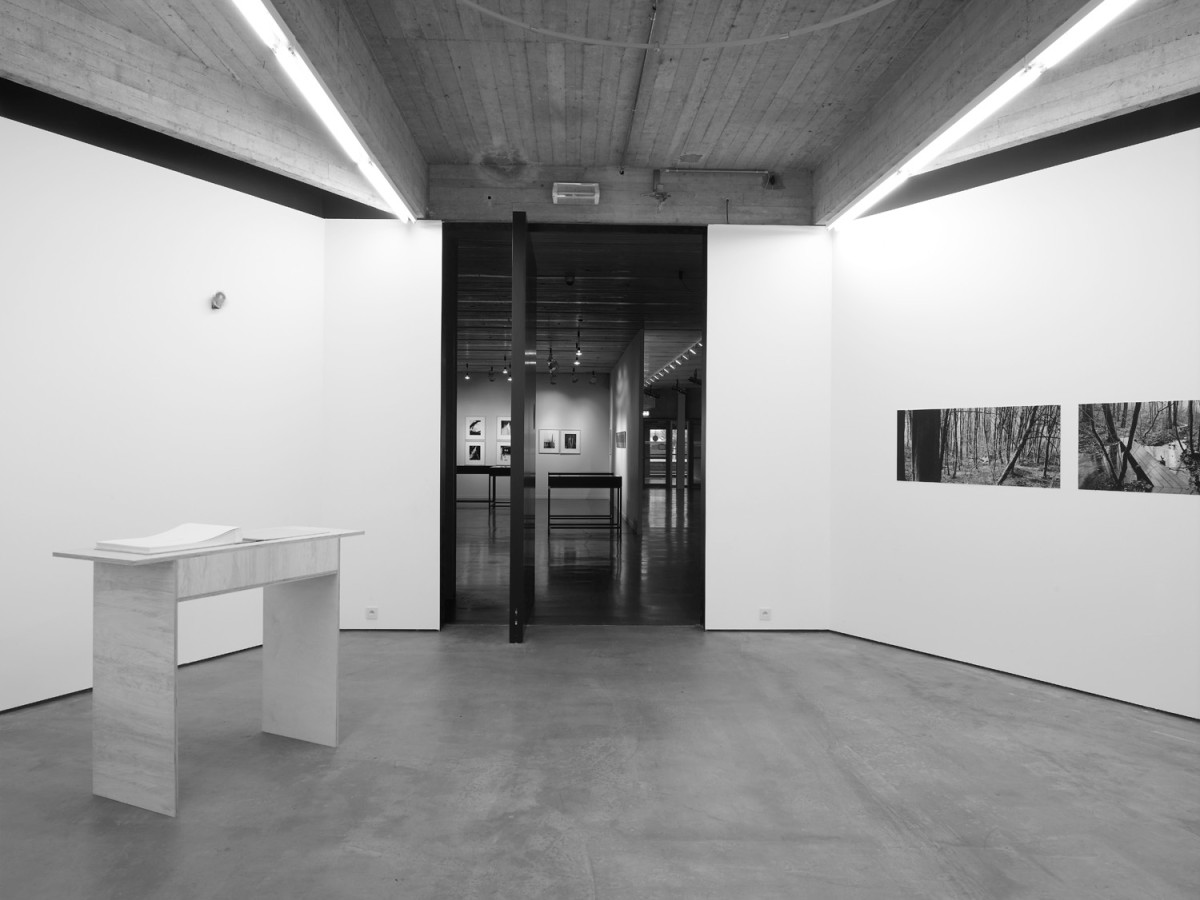
Exhibition View ‘Flash B(l)ack’ at CC Strombeek 2009
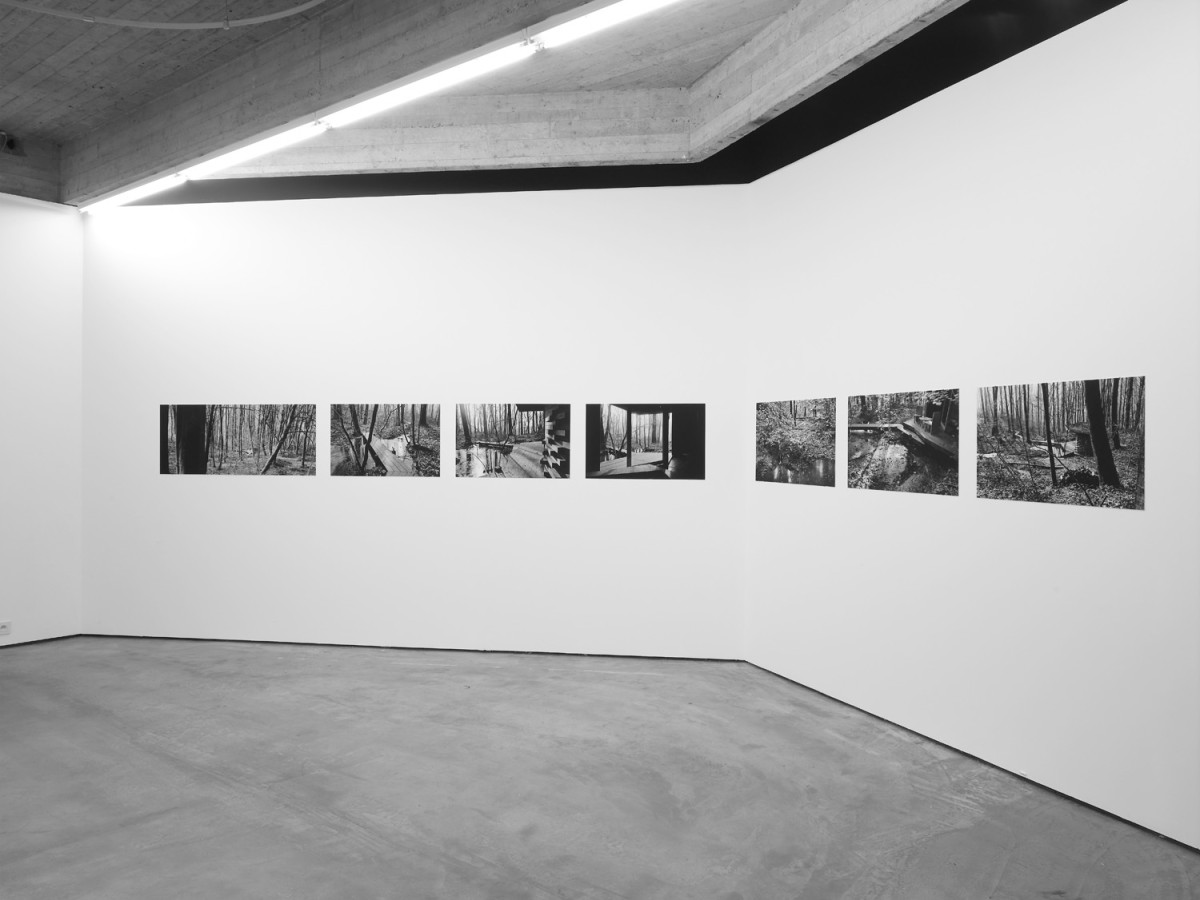
Exhibition View ‘Flash B(l)ack’ at CC Strombeek 2009
